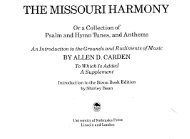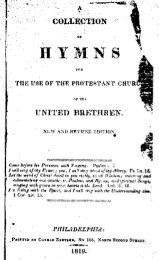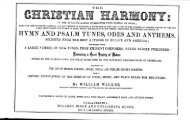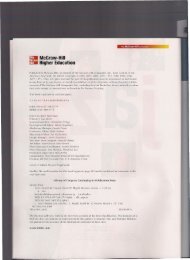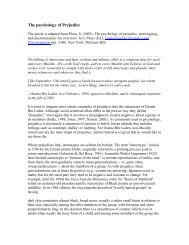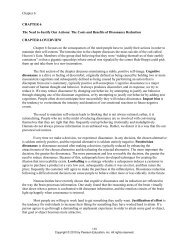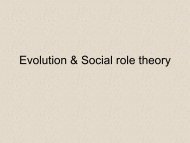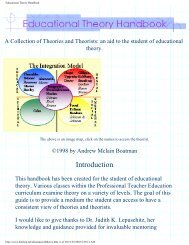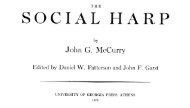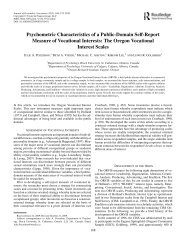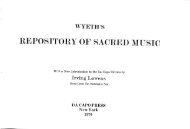Cleavage Structures.pdf
Cleavage Structures.pdf
Cleavage Structures.pdf
You also want an ePaper? Increase the reach of your titles
YUMPU automatically turns print PDFs into web optimized ePapers that Google loves.
18 cLEAvAcE srRucruREs, pARTy sysrEMs, AND vorER ALIGNMENT'<br />
:iuf i:':":'#:l?1,::[Sg##:*,r:,.ro.toverzuirins.Ananarysis<br />
fff t$:11tffi ijruj*".iotr,Jrdaffi ,.,ffi Hffi mJou,ft *,1<br />
r"t.i.ii,'iii,i:ii,i,H'ui'll,'.ilar,#:1T_eT.;:il;f<br />
many examples of t.li,f highry iUlt:Ul*<br />
ideorogizeJ<br />
burghers' p"rr! oppo.sitions<br />
cbnflicts beiween to officia,s<br />
*ort?., and<br />
etemenrs of economic_<br />
have always<br />
b".qgi;;l'', "r,f,"i",iproyr;,<br />
"oot"io.d<br />
^ilJiit.r,i* ;;;-"fr; rt.#"r*oog<br />
elements of curtural oppo!itior.'lJra?"i"i."1 ins,lation. -wo.iling-"tu*<br />
parties in opposition rid ;til; p";;ilffi -tended to be more virzuitd.,<br />
fi :::,r##,H, ji,!l-:iry*T'Hi3J*""Tg;,1T#$Hi"ds:*<br />
to become ofizuild., 6om6sticatea,<br />
*f,f,i, r;;"';;;'<br />
,-t" to influence from all segments<br />
"riil""l,r.1f"r"<br />
$mjlar variations wi''occur-at.a wide range of points on the territotiar<br />
-axis-of orEFfrEDia--T' ou. irritiu aii"rri* ,i'it " I pore we gave examnriioF<br />
cutturat and re ti e iois,::rf;;;; -ii" "i#i"rrion of the centrar national<br />
elite'-but such oipositions are not arways purery tertitoriar. The movements<br />
may be completerv dominant in theii prJv;ri"i"i .t.ongt otds but may also find<br />
#"8#.'i:;;Hr1;:*-ti.d;'"fi<br />
;ifi ['t",#;;;;;h-#L"-<br />
- 'Ihe opposition of the ord Left in Norway-was essentially of this character.<br />
It was from rhe outset<br />
"_*ou"rn"oi Jii"in"g42rotest against the dom-<br />
i n a nce of the ccn trar i t" ; f riffi "r " ffi # i into ans<br />
a mass<br />
t-u<br />
movement<br />
r3ra:air;ry-Eio aden ed<br />
the suffrage 9r-*li"Jfri;fi#T;" dominlant<br />
was extended urbin strata. As<br />
abte to entrench ";;-;"-t#;#il;;" efforts<br />
itself<br />
proceeded<br />
in th" it was arso<br />
;*trJ';d[i1t'"uun gain contror in sorne of<br />
them'ss rhis vcrv broarrening<br />
"tlr* *."i*",irt"o" vulnerable to fiaementariol fi" ora L"tt in"*xi"gry<br />
g^* itself up as an Apiaria".y?rty $;".m"oil,toward rhe a pote and set<br />
f S in F'il,il pole<br />
onJtf,..<br />
and after<br />
wing<br />
ironp moved<br />
rrilory.o.t toward the j<br />
itself<br />
.tr"if,r<br />
as tir,iithe tbe Christfan<br />
mother partv estabrished<br />
y",iptri p-A; ii"in !ig. sl. TLe Scandinavian<br />
ffi:$:',:"H"'::i:*l r"rmation- J JenJ,ur'lu"r, -o,"."iir,-"'*!"ili'iini",<br />
'',b.*u;;"ilffi<br />
q,riigiffi1lT.iil';f '::lHTf,**rt"",."Hlil<br />
posed nationar education a. ,u"h *o of rr""r'i"i functional built<br />
organizations<br />
up extensive networks<br />
around ttreir roitoJerr; tirry'nro" -u..n<br />
concefnc i to defend the 6*atry<br />
.traditions - or or-irroaoi evangelism againsf the on-<br />
*ilf;ix,$<br />
*i'-to"^#"iil"i"gi,r.ii".<br />
ii'?ft ,:::J?'i'*<br />
-."iii;"<br />
""L."u,iu"<br />
qtr,"i,i";"",i;;;;;",,ff :f;j,,lhi"J':,Lilg**#,:l*;;li*"**#"lit;<br />
Church they resemblu tt<br />
"<br />
norionf;;i#'ttreat Britain and the And_<br />
Revolutionaries in the Netherlands,-;;'rh"<br />
";;;ts of their eftorts very different. rn the<br />
have been<br />
"lfr-l_"-l!; {il ;;it-d,T activists courd work wjrtun<br />
13""kin"i lr:fr",:T1e1or course, also wittin Labour) *Jt"""j ji^pJrfur"<br />
ffl,tllx#ti*i*tltur*9";"rut**"r*;l;--*f I<br />
The National Revolution"foiil-;;#,i;ing ci.cres of the tenirorial<br />
<strong>Cleavage</strong> <strong>Structures</strong>, Party Systems, and Voter Ahgnmenrs<br />
population to chose sides in conflicts over vahtes and cultural identities. The<br />
Industrial Revolution also triggered a variety of cultural countermovements,<br />
but in the longer run tended to cut across the value communities within the<br />
nation and to force the enfranchised citizenry to choose sides in terms of their<br />
economic interests, their shares in the increased wealth generated through<br />
the spread of the new technologies and the widening markets.<br />
In our a-g-+-/ paradigm we have distinguished two types of such interest<br />
cleavages: cleavages between rural and urban interests (3) and cleavages between<br />
worker and employer interests (4).<br />
TheSgerlac_ulargr,gpth of -world trade and industrial production generated<br />
-inc5,qfifuItriins,b-eurililttlJfrimary piiiinCui-in the countrysidJ and the<br />
merchants and the entrepreneurs in the towns and the cities. On the continent,<br />
the conflicting interests of the rural and the urban areas had been recognized<br />
since the Middle Ages in the separate rcpresentation of the estates: the<br />
nobility and, in exceltional c"s"r,'th" freehttd peasants spoke for the land,<br />
and the burghers spoke for the cities. The Industrial Revolution deepened<br />
these conflicts and in country after country produced distinct rural-urban<br />
alignments in the national legislatures. Often the old divisions between<br />
estates were simply carried over into the unified parliaments and found expression<br />
in oppositions between Consewative-Agiarian and Liberal-Radical<br />
parties. The conflicts between rural and urban interests had been much less<br />
marked in Great Britain than on the continent. The House of Commons rvas<br />
not an assembly of the burgher estate but a body of legislators representing<br />
the constituent localities of the realm, the couuties and the boroughs.3o Yet<br />
even there the Industrial Revolution produced deep and bitter cleavages between<br />
the landed interests and the urban; in England, if not in Wales and<br />
Scotland, the opposition between Conservatives and Libcrals fed largely on<br />
these strains until the 1880's.36<br />
There was a hard core of economic conflict in these oppositions, but:uhal<br />
.made them so deep and bitter was the struggle for,fhe-saintenance of acquiiettl-sratusandfirec@oTaEEGvffiEt.(frEngblgJhelqgg{efiQ.mled<br />
the country, and thi rising class of inAustrill-erftifirenefirs, m-any of*l<br />
them religiously at odds with the established church, for decades aligned<br />
themselves in opposition both to defend their economic interests and to assert<br />
their claims to status. It would be a misunderstanding, says the historian<br />
George Kitson Clark,"t to think'of agriculture "as an industry organized like<br />
any other industry-primarily for the puqposes of efficient production. ^lt was<br />
. . . rather organiZed to ensute the survival intact ol a caste. The proprietorS<br />
of the great,estates were not just very rich men whose capital happened to be<br />
invested in land, they wcre rather the life tenants of very considErable positions<br />
which it was their duty to leave intact to their successors. In a way it<br />
was the estate that mattered and not the holder of the estate. . . ." !hc^-qqtt_<br />
-4ie++€t\ueen-Cqrervatives and Liberals reflected an opposition between two<br />
y,alue orientations n-<br />
nections versus the claims for status throu$h achievement and entcrprise,<br />
. These are typical strains in all transitional-societies; they tend to be most<br />
intensive in the early phases of industrialization and to soften as the rising<br />
elite establishes itself in the community. In England, this process of reconciliation<br />
proceeded quite rapidly. In a society open to extensive mobility and



